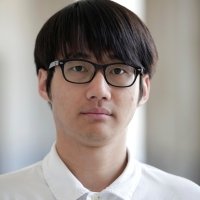Sewing Machines for Widows: Self-Help and CARE Aid in Postwar Korea, 1955-1960
From 1955 to the 1960s, CARE launched and supervised dozens of projects that sought to nurture "self-help" among refugees, widows, and children in South Korea.

A blog of the History and Public Policy Program
From 1955 to the 1960s, CARE launched and supervised dozens of projects that sought to nurture "self-help" among refugees, widows, and children in South Korea.
There are 152 widows and children all of whom live in the most deplorable of conditions in the heart of Seoul. They have been allocated by the Mayor of Seoul, 1000 sq meters of land on which they have pitched tents, dug caves, and built shacks in which they live.[i]
So wrote Milo A. Kamstra, the chief of the CARE mission in Korea, to his organization’s headquarters in New York in March 1955. After outlining this desperate situation in postwar South Korea, Kamstra then introduced a plan to help widows and children: the Choong Moo Ro Widows Assimilation Project.
For this particular group of women in Chungmu-ro, a central neighborhood in present day Seoul, Kamstra wished to provide them with proper housing and sewing machines, so that they would be able to start a business or otherwise make a living. The broader goal of the project was is to create villages for war refugees from North Korea, to provide them with basic needs, and ultimately to help them become “self-supporting” with a decent quality of life.[ii]
CARE in Korea initiated the Choong Moo Ro Widows Assimilation Project from the winter of 1954. Shortly after Kamstra’s letter reached New York, 18 sewing machines arrived for the widows, thanks to donation of the machines from the Reece Button Hole Machine Company in Boston and funding from Americans in Seattle. On September 12, 1955, the women and their families moved to a two-story building with about 4,500 square feet of space, which was named as “CARE Seattle Home” (Seong Man Won in Korean). From here, they began to produce clothing, slippers, and other sewn products.
Park Hoo Jin, the leader of the CARE Seattle Home, expressed his gratitude to the donors in Seattle in a letter sent in May 1955. Assuring the donors of the success of project, CARE in Korea also self-assessed that the project successfully taught the villagers the value of “self-help” and enabled them to become self-reliant in maintaining their living.[iii]
The project in Chungmu-ro, which was called either “Freedom Village Project #1” or “Village Project #1” in internal CARE documentation, was replicated elsewhere in Korea.
From 1955 to the 1960s, CARE in Korea launched and supervised at least 43 village projects in other parts of Korea, including Busan, the second largest city. It also repeated the same “widow project” in Suwon, a city south of Seoul in the same year.
This series of village projects shows that CARE attempted to not only provide Koreans with urgent aid such as food packages, but also that the organization was directly involved in addressing, over a longer-term, the country’s postwar reconstruction, including how to deal with war refugees, infrastructure, and employment.
Future research on this topic should examine how CARE’s stated goal of raising self-reliant war refugees from North Korea, especially women, overlapped with the Cold War policy and interests of the United States Government and the postwar South Korean Government. It is also necessary to question how the North Korean refugees themselves felt about the village project and the assistance that they received from CARE.
[i] Letter from Milo A. Kamstra, CARE Korea, to E. Finley Wiseman, CARE New York, 17 March 1955, Series 2 Program Department, Subseries 2.5, Box 377, Korea 1955-1969, CARE Records, Manuscripts and Archives Division, The New York Public Library.
[ii] Korean Freedom Village: Report on Choong Moo Ro, 1955, Series 2 Program Department, Subseries 2.5, Box 377, Korea 1955-1969, CARE Records, Manuscripts and Archives Division, The New York Public Library.
[iii] Korean Freedom Village: Report on Choong Moo Ro, 1955, Series 2 Program Department, Subseries 2.5, Box 377, Korea 1955-1969, CARE Records, Manuscripts and Archives Division, The New York Public Library.


A leader in making key foreign policy records accessible and fostering informed scholarship, analysis, and discussion on international affairs, past and present. Read more


The Cold War International History Project supports the full and prompt release of historical materials by governments on all sides of the Cold War. Read more


The North Korea International Documentation Project serves as an informational clearinghouse on North Korea for the scholarly and policymaking communities, disseminating documents on the DPRK from its former communist allies that provide valuable insight into the actions and nature of the North Korean state. Read more



